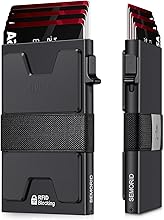
This St. John's hiker is taking a DIY approach to protecting himself from the elements
CBC
Newfoundland and Labrador's weather calls for clothing that can stand up to the elements. So when avid hiker John Taylor-Hood went looking for a new jacket, he decided to take things into his own hands.
"I was looking around for a slightly more economical alternative. I do a lot of off-trail hiking, dense bush, bushwhacking and that sort of thing. And a lot of the ones you can buy just aren't durable enough unless you want to pay a hefty sum for them," he told CBC Radio's Weekend AM recently.
Hood decided to take a different route; he bought a $30 jacket online and weatherproofed it on his own using wax. Using a layer of paraffin and beeswax, he says he was able to create a jacket ideal for fighting the province's weather conditions.
"When it's warm, you rub the wax over it in long, even strips. It will get a waxy sheen or a finish on the outside, and you can see it on the forearm of my jacket," he said.
"Then you melt it in with the heat gun, and the result is a jacket that is completely windproof and will withstand light to moderate rain for several hours.… It's very cosy."
He said part of his inspiration came from researching wax and its use on clothing, which he says has been used on the water for centuries as a way to better waterproof sails on the ocean.
"This made the sails more windproof and more water resistant. Then they discovered that since it kept the water out, take old sails, cut jackets out of them, and those were the original oil skins," he said.
Hood said he had a lot of fun trying to perfect the project, and said the jacket wouldn't be too hard to recreate once a person finds their method of choice.
"Play with it, learn how to apply it. Everybody's technique works a little differently," he said.
"Just try it! Trial and error is the best way to do it."
Read more from CBC Newfoundland and Labrador





















 Run 3 Space | Play Space Running Game
Run 3 Space | Play Space Running Game Traffic Jam 3D | Online Racing Game
Traffic Jam 3D | Online Racing Game Duck Hunt | Play Old Classic Game
Duck Hunt | Play Old Classic Game











